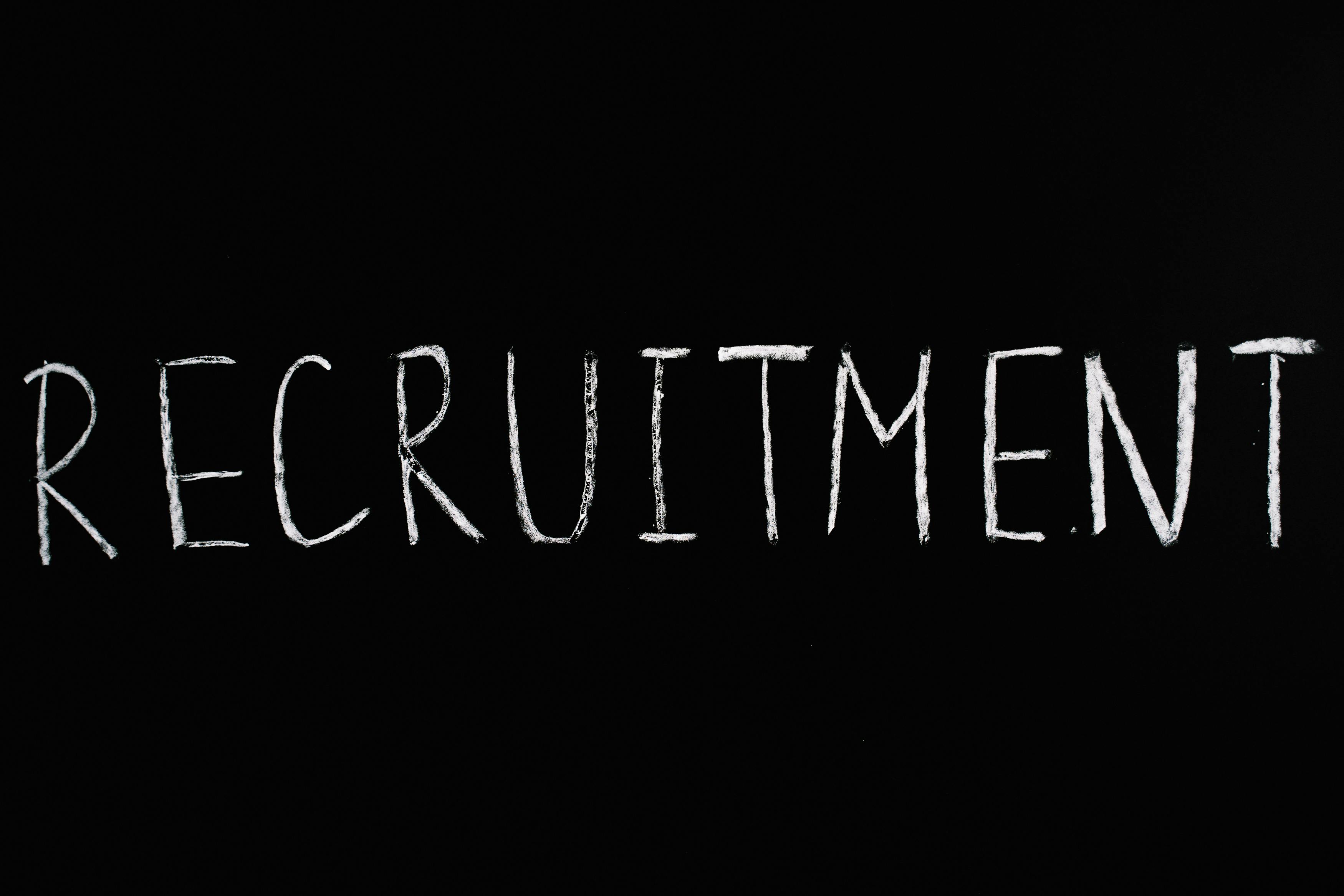
Is an ATS the same as a CRM? Understanding the key differences
How to choose the right system for recruitment and business growth
3 min read
Oct 18, 2025
Is an ATS the same as a CRM? Understanding the key differences
How to choose the right system for recruitment and business growth
3 min read
Oct 18, 2025
|
Take a deeper dive into how outsourcing firms work

Community
The best ATS features to look for in 2026
In the rapidly evolving world of recruitment, choosing the right Applicant Tracking System (ATS) can make all the difference, especially as AI recruitment, IT outsourcing, and IT consulting become integral parts of how companies hire top talent. If you’re evaluating ATS platforms for 2026, here are the features that matter most, and why Fullsight should be on your radar. Why ATS matters more than ever The global Applicant Tracking System market is surging. According to recent research, the ATS market is projected to reach USD 5.62 billion in 2025, with a compound annual growth rate (CAGR) of about 8 percent through 2035. Simultaneously, the AI recruitment sector, which is tightly coupled with modern ATS offerings, is projected to expand in 2026. These numbers reflect how much organizations are leaning into automation, predictive analytics, and machine learning to optimize hiring. Essential ATS features for 2026 Here are the most critical features forward-thinking recruiters should prioritize in their ATS selection: AI-powered resume screening and semantic searchModern ATS platforms should leverage natural language processing (NLP) and machine-learning models to scan CVs deeply, not just for keywords but for real skills and patterns. Many tools now offer predictive matching to rank candidates based on their fit, eliminating bias and speeding up shortlisting.Automated interview scheduling and communicationA powerful ATS will integrate with your calendar and send interview invites, reminders, and follow-ups automatically. This reduces administrative burden and improves candidate experience.Multi-agent LLM frameworks for screeningCutting-edge systems are now using large language models (LLMs) in a modular way, extractor agents, evaluator agents, and summarizers to assess resumes more contextually and fairly. This ensures more accurate candidate-job matching and enables explainability in AI decisions.Bias mitigation and fairness toolsResponsible AI matters. A modern ATS should include dashboards and audit logs to monitor potential bias, anonymize candidate data (e.g. blind resume review), and provide fair ranking mechanisms. This aligns with trends of AI recruitment tools reducing discrimination and increasing diversity. Analytics and predictive insightsLook for strong analytics: time-to-fill, quality-of-hire, source tracking, and retention forecasts. Predictive analytics helps you plan talent pipelines, identify bottlenecks, and make data-driven decisions.Scalable cloud architectureWhether you're part of a large IT outsourcing firm or a nimble IT consulting team, your ATS must support a cloud-based multitenant model for easy scaling, remote access, and real-time collaboration across global teams.Candidate experience and engagementA modern ATS should power candidate-facing chatbots, status updates (“Your application is being reviewed”), and mobile-first application flows. Good communication builds trust and strengthens employer branding.Compliance, security, and data privacyWith regulations like GDPR (or other local equivalents), your ATS must support data encryption, candidate consent management, audit trails, and secure APIs, especially when collecting sensitive data.Easy integration with HR ecosystemsThe ATS should integrate smoothly with other tools: HRIS systems, skill-assessment platforms, learning management systems, and payroll. This interoperability is crucial for IT consulting firms where recruiting and operations overlap.Explainable and fine-tuned LLMsInnovations in recruitment automation now include fine-tuned LLMs specifically trained to evaluate resumes and match job descriptions, improving precision (e.g., achieving high F1 scores) while keeping the process transparent. The role of AI recruitment and IT consulting As companies continue to rely on IT outsourcing and IT consulting to build and scale engineering teams, a robust ATS is fundamental. AI-driven recruitment accelerates hiring cycles, reduces cost-per-hire, and helps identify niche technical talent, even in specialized domains like DevOps, cloud infrastructure, or data science. This technological synergy allows IT consulting firms to deliver higher value, faster, and with better workforce planning. How Fullsight excels as an ATS Here’s why Fullsight stands out in the ATS landscape for 2026:He combines AI recruitment capabilities with semantic resume parsing and predictive ranking, ensuring you don’t miss qualified candidates.His architecture is cloud-native, making him ideal for IT outsourcing teams working across clients and geographies.He supports robust data analytics, offering dashboards for diversity, time-to-hire, and source performance — enabling IT consulting firms to optimize their talent operations.He is built with security and compliance in mind, safeguarding candidate data and maintaining auditability.He’s constantly evolving: Fullsight integrates cutting-edge LLM agents to screen and evaluate candidates in explainable, fair ways. In 2026, the best Applicant Tracking System won’t just automate tasks; it will think, predict, and help you hire smarter. By prioritizing AI-enhanced screening, predictive analytics, fairness, and seamless integration, you position your recruitment process for the future. If you’re looking for an ATS that understands the needs of modern recruiters(especially in IT outsourcing or IT consulting) Fullsight is ready to be your technical partner.

Community
How Fullsight strengthens collaboration between recruiters and hiring managers
In today’s fast-paced talent market, the partnership between recruiters and hiring managers is more critical than ever. When aligned, this collaboration results in faster hiring, better-quality candidates, and a more efficient use of resources. Fullsight, a next-generation applicant tracking system (ATS), strengthens that bond by uniting teams around smart workflows, data insights, and AI recruitment tools. Maximizing recruiter–hiring manager alignment One of the core advantages of using a robust applicant tracking system lies in its capacity to centralize candidate information and give both recruiters and hiring managers real-time visibility. Rather than exchanging feedback via long email threads, everyone works from the same platform, reviewing resumes, sharing notes, and rating candidates. This fosters more transparent feedback loops and reduces miscommunication. With Fullsight, your recruitment workflow becomes standardized yet flexible. Hiring managers can define role-specific criteria, and recruiters can apply consistent filters: parsing resumes, assessing experience, and tagging skills automatically. This level of shared structure means both sides speak the same language and make decisions together based on the same data. How AI recruitment amplifies collaboration Artificial intelligence is rapidly becoming part of mainstream hiring, and most companies now use AI in recruitment workflows. AI tools offer huge gains in speed, accuracy, and insights, especially when screening large volumes of applications. Fullsight leverages AI to rank and score candidates, flagging top matches for both recruiters and hiring managers in a shared dashboard. This dramatically reduces the time-to-hire, freeing up both teams to focus on strategic conversations. At the same time, human oversight remains essential: hiring managers can review AI-generated recommendations, adjust priorities, and weigh cultural fit, striking a balance between efficiency and judgment. That shows how AI recruitment, when properly harnessed, can become a powerful partner in collaborative hiring. Supporting IT outsourcing and IT consulting recruitment When organizations outsource elements of their talent acquisition, such as in IT outsourcing or IT consulting engagements, the need for seamless collaboration becomes even more pronounced. Fullsight helps by providing a unified view of requisitions, candidate pipelines, and performance metrics across internal HR teams and external recruiters. This alignment is critical in IT consulting, where specialized skills are in high demand and roles may be complex or niche. By combining a shared ATS, AI recruitment tools, and data-driven dashboards, Fullsight ensures that both internal hiring managers and external consultants have full transparency into the process. This helps reduce duplication, improve feedback loops, and maintain consistent hiring standards across all partners. Driving better decisions with data A well-designed ATS should do more than just track candidates — it should provide insights. Fullsight’s analytics capabilities allow teams to monitor key recruitment metrics: time-to-hire, source effectiveness, dropout rates, diversity, and more. These data-driven views ensure that both recruiters and hiring managers make decisions informed by evidence, not intuition. Integrations with other HR systems are also crucial. Integrating an ATS with tools, communication platforms, and assessment software improves user adoption, reduces manual work, and simplifies reporting. By working on a unified technical stack, recruiters and managers avoid switching between systems, which keeps the hiring process smooth and aligned. Enhancing communication and candidate experience Automating repetitive tasks (such as scheduling interviews, sending status updates, or parsing resumes) means recruiters and hiring managers can devote more time to human-centered activities. Fullsight’s user-friendly interface centralizes feedback and conversation, reducing the risk of lost context or delayed responses. Moreover, by freeing recruiters from administrative burden, Fullsight helps them spend more time building real relationships with candidates. That leads to a more personal candidate experience — which often translates into higher engagement, better employer branding, and stronger offers. In summary, Fullsight strengthens collaboration between recruiters and hiring managers by combining the power of a modern ATS with AI recruitment, data insights, and seamless integration, especially in complex environments like IT outsourcing and IT consulting. By fostering shared visibility, speeding up processes, and enabling data-driven decisions, he helps teams hire more effectively and strategically.

Community
Why every outsourcing company needs a modern ATS
In the world of IT outsourcing and IT consulting, every second counts. When an IT outsourcing firm is engaged in delivering projects, scales its workforce, or adapts to changing client demands, efficient recruitment and HR management are not optional; they are mission-critical. That’s why a robust Applicant Tracking System (ATS) is a must for any outsourcing business that wants to stay ahead. First, let’s consider the challenge. Outsourcing companies must recruit with speed and precision: matching technical talent to evolving project needs, coordinating across geographies, and aligning recruitment with business goals. Without a modern ATS, many firms end up with fragmented tools, manual workflows, and poor visibility into hiring pipelines. They might rely on spreadsheets, email exchanges, or basic job boards, yet these processes cannot scale when the business grows. Now, the benefits of integrating a modern ATS: According to recent data, 93% of recruitment professionals use an ATS to streamline hiring processes. More specifically, companies using an ATS report up to a 60% shorter hiring cycle. For IT outsourcing firms, that speed translates directly into faster project ramp-up, improved responsiveness, and lower time-to-billable resources. An ATS also improves candidate quality: 78.5% of ATS users say the quality of hires has increased. From a business and management perspective, using an ATS helps create a unified recruitment infrastructure, bridging HR management, recruitment, and business operations. For an IT outsourcing firm, that means the recruitment team can align with account managers, project leads, and consulting partners, ensuring the right talent is hired for the right engagements. Furthermore, outsourcing firms often work with external vendors, partner networks, and consultants. A modern ATS can integrate with external workflows, making recruitment more adaptive and agile. Consider these key capabilities a modern ATS offers that are especially relevant for IT outsourcing and consulting businesses:Automated candidate screening and workflow management. With large volumes of applications, manual screening is inefficient and error-prone. An ATS can parse resumes, filter by skills, schedule interviews, and generate analytics, freeing HR to focus on strategic sourcing rather than administrative load.Integration with business management software. For outsourcing de IT companies, recruitment cannot sit in isolation; it must connect to project management, billing, consultant deployment, and resource forecasting. A modern ATS that supports integration enables HR management to deliver insights to business leaders.Scalability and adaptability. Outsourcing firms may ramp up quickly for projects, diversify skill sets, or work across locations. A modern ATS makes scaling recruitment pipelines and talent pools manageable, responsive, and aligned with shifting demands.Data-driven decisions. An ATS offers dashboards, metrics, and analytics: time-to-hire, cost-per-hire, source quality, and funnel conversion. For management of outsourcing and consulting businesses, these metrics translate to improved profitability, lower risk, and better talent deployment.Enhanced candidate experience and employer brand. In the competitive world of IT recruitment, candidate experience matters. A good ATS offers communication tools, status updates, and smoother application journeys. That helps attract quality talent and strengthens the brand of your consulting or outsourcing business. Moreover, IT outsourcing companies often delegate operational functions, such as recruitment or HR, to external specialists. But even in those cases, the ability to oversee and manage those workflows via an ATS is invaluable, as it ensures consistency, alignment, and transparency between internal business management and outsourced functions.In terms of cost and return on investment, the science is compelling: Outsourcing recruitment and using an ATS reduces hiring costs, improves quality, and speeds hiring. For businesses in IT consulting and outsourcing, where talent is the product, those improvements are not optional; they are strategic. In conclusion, for any IT outsourcing or IT consulting company that wants to streamline recruitment, elevate HR management, and align talent acquisition with business goals, a modern ATS is foundational. It is not simply a recruitment tool; it’s a strategic business enabler. When it comes to choosing the right system, this is where Fullsight plays a key role. He is designed as an Applicant Tracking System that meets the demands of outsourcing companies, is integrated, scalable, data-driven, and aligned with business management objectives. With Fullsight in place, your IT outsourcing business can transform recruitment into a competitive advantage, ensuring that your team, your consultants, and your HR management are all working in tandem with your business strategy.

Community
Why outsourcing companies are investing in recruitment technology
In the evolving landscape of IT outsourcing and IT consulting, outsourcing companies face mounting pressure to deliver rapid, high‑quality talent while managing costs and scale. For these organisations, investing in advanced recruitment technology, including a modern Applicant Tracking System (ATS), is no longer optional; it is strategic. Here’s why recruitment technology has become essential for outsourcing de TI businesses and how it transforms recruitment, business management, HR management, and talent acquisition. The outsourcing‑tech‑recruitment nexus Outsourcing companies need to fill roles quickly and often at scale: software engineers, cloud specialists, cybersecurity experts, and project managers. Traditional recruitment models, reliant on manual CV screening, email coordination, and fragmented systems, struggle to keep pace. That’s why leading firms are adopting recruitment technology coupled with an ATS to streamline workflows. The global recruitment outsourcing market, for example, was estimated at USD 10.3 billion in 2024 and is projected to grow to USD 25.8 billion by 2034 at a CAGR of 9.9%. What drives this growth? One key factor is technology adoption: firms offering IT outsourcing or IT consulting are turning to automation, cloud‑based platforms, data analytics, and ATS integrations to stay competitive and manage volumes. Key benefits of recruitment technology for outsourcing companiesTime‑to‑hire reduction – Outsourcing providers often operate under client SLAs. Recruitment technology and an ATS can significantly reduce time‑to‑hire by automating screening, scheduling, and candidate matching. Cost‑efficiency and scalability – Manual recruitment drives cost, repetitive tasks, and inefficiencies. By integrating an ATS and other tech tools, outsourcing companies can scale their recruitment engine, reduce operational burden and optimise HR management and business processes.Quality of hires and matching – With specialised roles in IT outsourcing and IT consulting, candidate fit is critical. Recruitment technology supports skills‑based screening, data‑driven assessments, and improved matching algorithms, leading to better performance and retention.Enhanced candidate experience and employer brand – Top talent in IT values transparent, fast, and digital hiring experiences. Outsourcing companies that leverage recruitment technology and ATS platforms create a more modern candidate journey, strengthening their brand as employers.Integration and data‑driven insights – A robust ATS enables full visibility into sourcing channels, candidate pipelines, time‑to‑fill metrics, cost‑per‑hire, and diversity data. These analytics support strategic management, HR management decisions, and continuous improvement in outsourcing de TI contexts. Why now is the moment for outsourcing companies to actTalent scarcity: In IT outsourcing, the demand for niche tech skills is intense and rising. Outsourcing companies must move faster and smarter to win those talents.Business agility: Outsourcing models change rapidly, projects scale up, new services are added, and global teams form. Recruitment technology provides the agility and infrastructure fit for this dynamic.Competitive differentiation: Investment in recruitment tools and ATS capabilities becomes a differentiator among outsourcing firms—those that hire better and faster win the contracts.Operational efficiency: For businesses providing IT consulting and outsourcing services, internal HR efficiency translates directly into margins, client delivery, and growth.Global sourcing and compliance: IT outsourcing often crosses borders. Recruitment technology helps standardise processes, maintain compliance, track workflows, and scale globally. When outsourcing companies invest in recruitment technology to optimise HR management, business growth, and operational scale, the right Applicant Tracking System makes all the difference. Fullsight is a purpose‑built ATS designed for the demands of IT outsourcing and IT consulting firms, bringing automation, candidate‑pipeline visibility, analytics, and workflow integration into one platform.
